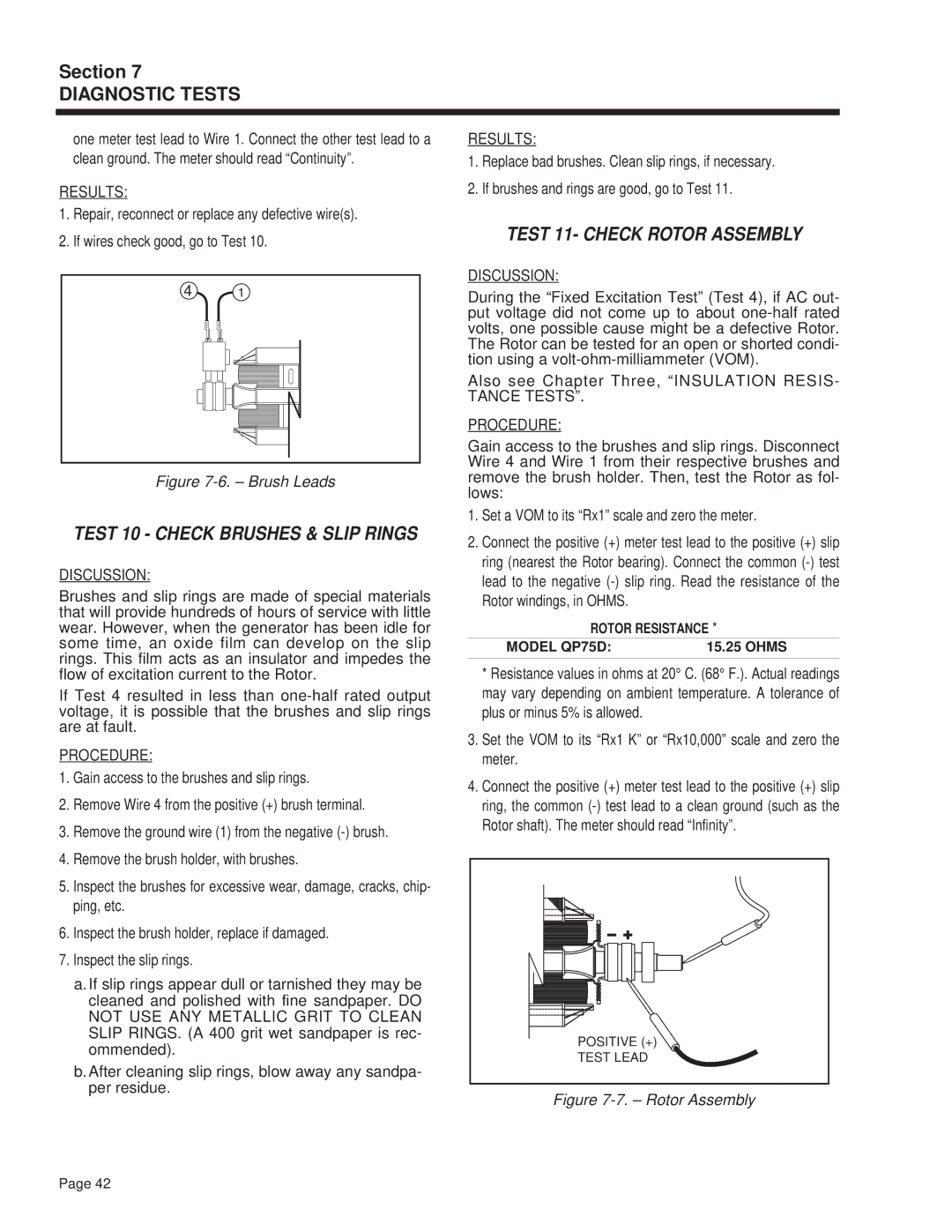
Section 7
DIAGNOSTIC TESTS
one meter test lead to Wire 1. Connect the other test lead to a clean ground. The meter should read “Continuity”.
RESULTS:
1.Repair, reconnect or replace any defective wire(s).
2.If wires check good, go to Test 10.
4 1
Figure 7-6. – Brush Leads
TEST 10 - CHECK BRUSHES & SLIP RINGS
DISCUSSION:
Brushes and slip rings are made of special materials that will provide hundreds of hours of service with little wear. However, when the generator has been idle for some time, an oxide film can develop on the slip rings. This film acts as an insulator and impedes the flow of excitation current to the Rotor.
If Test 4 resulted in less than
PROCEDURE:
1.Gain access to the brushes and slip rings.
2.Remove Wire 4 from the positive (+) brush terminal.
3.Remove the ground wire (1) from the negative
4.Remove the brush holder, with brushes.
5.Inspect the brushes for excessive wear, damage, cracks, chip- ping, etc.
6.Inspect the brush holder, replace if damaged.
7.Inspect the slip rings.
a.If slip rings appear dull or tarnished they may be cleaned and polished with fine sandpaper. DO NOT USE ANY METALLIC GRIT TO CLEAN SLIP RINGS. (A 400 grit wet sandpaper is rec- ommended).
b.After cleaning slip rings, blow away any sandpa- per residue.
RESULTS:
1.Replace bad brushes. Clean slip rings, if necessary.
2.If brushes and rings are good, go to Test 11.
TEST 11- CHECK ROTOR ASSEMBLY
DISCUSSION:
During the “Fixed Excitation Test” (Test 4), if AC out- put voltage did not come up to about
Also see Chapter Three, “INSULATION RESIS-
TANCE TESTS”.
PROCEDURE:
Gain access to the brushes and slip rings. Disconnect Wire 4 and Wire 1 from their respective brushes and remove the brush holder. Then, test the Rotor as fol- lows:
1.Set a VOM to its “Rx1” scale and zero the meter.
2.Connect the positive (+) meter test lead to the positive (+) slip ring (nearest the Rotor bearing). Connect the common
ROTOR RESISTANCE *
MODEL QP75D: | 15.25 OHMS |
*Resistance values in ohms at 20° C. (68° F.). Actual readings may vary depending on ambient temperature. A tolerance of plus or minus 5% is allowed.
3.Set the VOM to its “Rx1 K” or “Rx10,000” scale and zero the meter.
4.Connect the positive (+) meter test lead to the positive (+) slip ring, the common
POSITIVE (+)
TEST LEAD
Figure 7-7. – Rotor Assembly
Page 42
